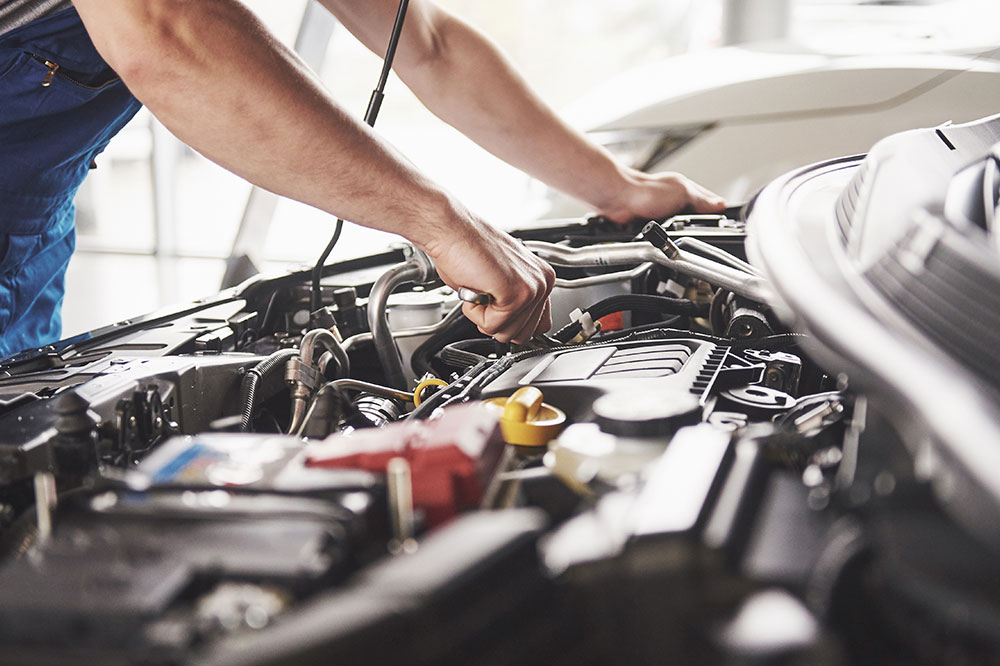9 common car maintenance mistakes and how to avoid them

A car is a significant investment, so it is important to ensure it functions properly for a long time. Timely repairs, servicing, and maintenance are a few ways to keep your car in good condition. However, car owners often miss out on certain aspects of maintenance, which can lead to repair jobs that can burn a hole in the wallet. To help avoid such scenarios, here are some common car maintenance mistakes to avoid.
Trying to service your car without any expertise
Car owners may be easily tempted to do maintenance work on their automobiles to save a few bucks. You may think the problem is relatively small, and you only need to look at a few videos online, get the tools, and solve the problem yourself. However, if you don’t have the required experience or expertise in car maintenance, it will result in problems in the long run. You will have to pay more than you wanted to save to reverse all the damage. Therefore, it is always best to check with a professional having the necessary equipment, tools, and expertise to service and repair your car correctly.
Postponing the car wash
Reasons ranging from sudden emergency appointments and personal commitments to errands often push back on the routine car wash you had planned. While it is okay to miss out on the car wash a couple of times, skipping it for weeks or months is one of the most common car maintenance mistakes that can be easily avoided. It is because weather elements, pollution, mud, and chemicals will damage the exterior of your car. It may also lead to premature rusting of the car paint. So regular visits to the car wash that also cleans the undercarriage will go a long way in protecting your car.
Forgetting to clean your car’s interior
Most people assume that car maintenance only involves taking care of the exterior and mechanical components of the car. However, just like the exterior, the automobile’s interior must be kept clean. Dust, grit, moisture, and crumbs can cause damage to the floorboards and the seats. So make sure to vacuum the inside of your car regularly. Remove any stains immediately after finding them. Use a mild disinfectant and soft cloth to wipe off the dirt, dust, and grime from the doors, seats, dashboard, and console. If you use mats or covers on your floorboards, dust them off or wash them regularly to prevent damage.
Ignoring the check engine light for months
The check engine light is there for a purpose; to let you know there is some problem with your car’s engine. However, most people ignore the light when the car operates normally. So they end up ignoring it until the day the car breaks down, making them pay more out of their pocket. It is a prevalent car maintenance mistake that most automobile owners make. To avoid complications, always get your car checked the moment the check engine light turns on.
Continuing to drive the car even when the engine is overheated
The engine of your car will get very hot while it is running. All cars have a cooling system to prevent the engine from overheating. But the system can fail for various reasons such as regular wear and tear, damage, etc. When this happens, the engine will become overheated. In such cases, it is advised to stop the car immediately and call a towing service.
Not checking the pressure of the tires
Many times the tires of a car look properly inflated from the outside, even when they are low on air. It is why many automobile owners often make the mistake of not regularly checking tire pressure. The slightly low air pressure may not cause the tires to blow out. But this can lead to the very poor fuel efficiency of the vehicle. Moreover, there is always the running risk of the air pressure suddenly dropping drastically, for instance, when the tires hit a pothole or a ditch. To avoid this, ensure you check your vehicle’s tire pressure regularly.
Not changing the oil
For most cars, an oil change must be done every 7,000 miles. It means you do not have to spend time and money on frequent oil changes; however, this easily becomes an excuse for avoiding changing the engine oil or postponing it for a long time. It will cause damage to the engine as well as the performance of the car. In the worse case, you may even have to rebuild or replace your engine, which will be very costly. So do not wait too long to get the oil changed as soon as you hit the 7,000 miles mark.
Forgetting to change the windshield wipers
Windshield wipers start to deteriorate with time. Regular wear and tear will render them ineffective, causing them to shake and chatter whenever you use them. As a result, they will leave streak marks over your windshield. So when there is snow, rain, sleet, and other precipitation, the damaged wipers will be of no help. Therefore, car owners must avoid this mistake and change the wipers as soon as they show signs of any damage.
Using a home glass cleaner to clean the rear windshield
A home glass cleaner will contain ammonia as one of the primary cleaning chemicals. The ammonia will cause the heating elements on your windshield to break down. These heating elements are the thin red lines (which are wires) that are designed to heat your rear windshield and help with defrosting. Ammonia in the home glass cleaner will damage these lines and the windshield. Therefore, always use window cleaners made specifically for automotive glass to avoid this issue.



